What’s happening here is happening elsewhere. And what’s coming may be bigger than even we doomsayers would dare predict. Barring a miracle, we are about to enter a new phase, the last phase, in the taming of the West. When it’s over it won’t be “the West” anymore. We all know “how the West was won.” What we are about to see is “how the West was done.” To use a recently popular expression, pretty soon, you can stick a fork in it. And all of us, no matter how much we love the country, bear responsibility.
From “New West Blues,” by Jim Stiles, 1991
About five years ago, I wrote a cautionary tale called, “Moab is Assimilated. Bike Borg Moves South…Is Resistance Futile in San Juan County?” Then and now, the story has generated both positive and negative reviews. Some think of the account as the canary in the coal mine…a portent of things to come. Others aren’t so generous. When I recently re-posted it, one perennial Zephyr critic complained, “How about not resorting to sensationalism and crying wolf? No need for all of the ‘The sky is falling’ alarmism that the Zephyr is currently promoting.”
Another reader was a bit gentler, noting that it wasn’t the national park/monument designation by itself that was generating the madness that is Moab, he observed that it takes promotion, marketing, and infrastructure growth. “San Juan County is a dry county it’s (a) religious County,” he explained. “Keep it that way and they won’t come.”
I couldn’t have agreed more. But is San Juan County really safe from a Moab Future? As we’ve reported before, Bluff has already moved in that direction and has aligned itself with a recreation/tourist-based economy, even recruiting the financial support of outdoor industry giants like Patagonia and North Face to help make it happen.
But the more conservative communities to the north–Monticello and Blanding– have predominantly resisted such a transformation. One of their most effective arguments, as they fought the Obama monument, was the idea that its designation was more a marketing tool than an effort to protect the pristine beauty of area–that its purpose was a promotional hook to re-define San Juan County and, in effect, create another Moab. The County’s residents have said no…so far.
So…just like the 2014 “Bike Borg” story, or last month’s article about proposed new bike trails, consider this a cautionary tale as well. The sky hasn’t fallen. San Juan County still bears little resemblance to that town up north. But I’ve seen all this before. It won’t happen overnight, but it would be wise to pay attention and be prepared.
“Objects in the Future May be Closer than They Appear.”
THEN…”MAKE IT MONUMENTAL”
In August, a front page story in the local weekly took many residents—and me— by surprise. The article described the launch of “a redesign campaign of its brand to highlight the area as the entry point for nature-loving adventures and great scenery.”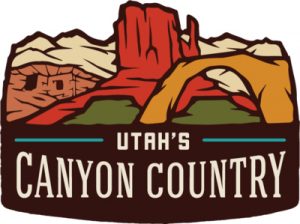
The new campaign includes a new tagline— “Make it Monumental.” Natalie Randall, San Juan County’s director of Economic development and Visitor Services, explained that “the revamp is the next logical step as the county capitalizes on the increased interest in the area. The county wants to promote the region as a less crowded entry point to one of the most photographed places on the planet.”
The announcement came as a shock to many San Juan residents. At least a couple thousand of them sport brightly colored stickers on their cars and trucks that read: #NOMONUMENT, a very prolific and visible reference to the strong opposition that was expressed by many San Juan citizens when President Obama first proclaimed Bears Ears National Monument in the last weeks of his administration.
On social media, via conservative-leaning facebook pages that had opposed the original proclamation, opposition to the new “Monumental” promotion was just as swift and pronounced. One comment summed up the feelings of many when he wrote that, “Selling the message ‘come here to get away from the crowds’ is stupid on its face. If the branding message succeeds the core message of the brand becomes a lie.“
Most San Juan County residents directed their fury at the county’s recently appointed (2017) Economic Development Director, Natalie Randall. It was Randall who announced the plan in the San Juan Record the previous week.
Conservative writer Marjorie Haun posted an article that raised concerns of a possible conflict of interest. Haun reported that Randall was the county’s economic development director, but also the owner of a recreation-based private company as well. And she wrote that:
“All local governments need to maintain a wide ethical line between policy formulation and things that personally and directly benefit the policy makers…San Juan County citizens are right to ask about whether or not she should have dual roles as economic development director (with a strong emphasis on outdoor recreation) while being the owner of an outdoor recreation company that is sure to profit from the PR campaigns and pro-tourism policies she is formulating.”
But county commissioner Phil Lyman came to Randall’s defense, writing that, “Natalie is an outstanding economic development director!…The county was well aware of Natalie’s ties to the biking tourism business when we hired her. Having an interest is not the same thing as having a conflict of interest.”
And while he cited his past opposition to a variety of taxes that he thought were unjust, Lyman added, “…we simply have to participate in some of these programs. It would be doing a huge disservice to county residents to boycott participation, given that huge sums of revenue are flowing from our local businesses to the State.”
Some argue that while tourist promotion grants indeed represent “huge sums of revenue,” the county’s fervent opposition to the marketing and promotional efforts of the outdoor industry and mainstream environmentalists makes the acceptance of that kind of money unseemly. One critic observed, “It would be like somebody donating a huge sum of money to SUWA, and then saying, BUT you can only spend it on coal mines…and then SUWA takes the money anyway, and spends it on coal!“
Former Grand County Councilman Lynn Jackson offered his own views on the promotional campaign. Jackson, a conservative, has long advocated for a diverse economy in southeast Utah and takes a dim view of a monolithic Industrial Recreation economy in Moab. He wrote:
“It’s all rather confusing to me. San Juan doesn’t want to become another Moab, yet they are following the exact blueprint that got Moab on its path to progressive nirvana. Welcoming and supporting outdoor environmental education programs and investments, providing support for building mountain bike trails, hiring an economic development coordinator with deep ties to the megalithic outdoor recreation industry, and creating a tourism slogan that’s over the top, in this case ridiculously over the top. “Make it Monumental” is just hard to figure, sending the message you’re all good with monuments down there, in light of what’s gone in the last 18 months? San Juan, looks like you’re well on your way, following the recipe exactly.“
THE WORKING MEETING…June 19, 2018
Still, many residents wanted to know where the “Make it Monumental” tagline originated and who approved it. Lifetime Blanding resident Jami Bayles, who strongly opposed the Obama monument, has also consistently decried the tactics of the outdoor industry and the mainstream environmental community, who have relentlessly marketed and promoted Bears Ears in the millions of dollars.
In an effort to determine who was truly responsible for the decision, Bayles reviewed “all of the minutes in the last 12 months and as far as I can see, it (the Make it Monumental campaign) was never formally addressed.”
But Bill Haven, the president of the Blanding Area Travel Council, and the owner of a recreation-based business, referred Bayles to a recording of a “working meeting” between the county commissioners and Randall on June 19, 2018. Bayles requested and received the audio from Randall.
(A verbatim transcript of the meeting and the audio can be found here.)
It confirms that more than three months ago, the San Juan County Commissioners unanimously supported Randall’s efforts to pursue a much more aggressive tourist promotional campaign, and that they supported the name.
In the meeting, Randall advised the commission that she was pursuing a matching fund grant with the state, a “co-op” grant. San Juan County, with the utilization of $200,000 from its transient room tax revenues would be able to double that amount with an additional $200,000 from the State of Utah.
“…we’ve done small matches in the past of like $10,000 or less. This year we’re kind of pulling a big one. We’re doing a $400,000 campaign project. We already have $200,000 that were typically allocated in our budget for marketing. This type of marketing specifically so we want to capitalize on that.”
(NOTE: The “Transient Room Tax” is, in effect, an additional sales tax. In Utah, “counties may impose a 4.25% TRT tax on the rental of rooms in hotels, motels, inns, trailer courts, campgrounds, tourist homes, and similar accommodations for stays of less than 30 consecutive days.” In some parts of Utah, the total tax can reach as high as 11.85%. In rural counties, where the basic sales tax is lower, the additional tax can be as low as 9%. Counties are not required to impose the TRT tax; it’s an option.)
Commissioner Adams commented that San Juan County had “missed the boat” on other lucrative grants, and Lyman agreed. Randall noted that in the future her office may pursue international promotional options but explained that the new marketing campaign would target specific areas in the United States. She continued:
“We’re calling (it) a ‘Monumental Campaign.’ (emphasis added) Focus is a ‘monumental’ experience, a ‘monumental’ vacation…kind of a play on words. But with our ad agency that we pulled on a lot of the metrics drive that this will be a successful draw. The markets that we’re looking at are California, specifically LA, Denver and Phoenix. We’re ranging everything from Facebook, Instagram, social, all the digital SCO (Social Content Optimisation) side of things that we can continue to track, adding to billboards into Denver that continue the same consistent message. And then extending to Hulu in Phoenix and California and then cable networks in Denver.”
Randall then explained her demographic priorities:
“The Hulu networks are interesting because you can track the demographic all the way down to the type of activity that the person wants to do or where they like to eat for dinner. Like types of restaurants they like. So we can really narrow down our target market. We’ve identified a primary and a secondary market within those states. The primary market that we’re looking at are ages 25-50 with 2-3 kids at home, income $60,000 and up. And then the secondary market are empty-nesters, 55 and up with a $200,000 net worth or $75,000 income.”
And she added, ” Everyone seems supportive of it.”
The commissioners wanted to know how she’d be able to track the success of the promotion. Randall explained that in addition to watching increases in Transient Room Tax revenues, her office was able to utilize a program called “Visa View.” She explained that:
“Visa View tracks any Visa card, both domestic and international that comes through our county lines. And then we can track back the user to their zip code, where they originated from, country code and even cities within countries. You can see their average daily spent. Typically you can then track like the stay because they continue using their card throughout.”
To which Commissioner Benally replied, “Wow.”
Later in the presentation, Randall discussed the need to expand and improve the county’s tourism infrastructure. She offered a short list of new locally-owned businesses that have attempted to fill that need. But looking ahead she speculated on the “the gaps and needs of the businesses in your community as you’re serving and meeting the expectations of visitors…”
Could the local community fill those gaps? She continued, “…reaching out to the residents…is there anyone that wants to take on that need? And if there isn’t, then our office (is) going out and recruiting, and bringing in outside business to do that. We’d like to keep it local first if possible, and then grow from there.”
In other words, for the kind of tourist future that the San Juan County Office of Economic Development and Visitor Services is pursuing, the business community currently established in San Juan County may not be able—or may not be inclined—to invest in the kind of tourism/recreation infrastructure she thinks is necessary. If that happens, Randall and her office will seek investors from out-of-town/out-of-state.
And with that observation, Randall asked for and received a letter of enthusiastic support from the Commission and the ‘working meeting’ came to a close. Later that day, the commissioners met officially to consider the letter. Benally made a motion to approve, Lyman seconded, and the vote was unanimous.
The new “Make it Monumental” promotion represented a 2000% increase in recent funding for tourism. More than the slogan itself, it’s the MONEY being spent that could start to affect San Juan County’s people and resources. And as Randall noted, this is just the beginning. Randall told the commissioners, “Looking into 2020 our next campaign will then focus in on…ok this is who we brought in to the area, now extending like the stay with those individuals. So we’re changing our metrics.”
That all happened in June. Very few San Juan residents were aware of the working meeting or the vote until months later.
THE REACTION
When it became clear that the San Juan County Commission had indeed thrown its complete support behind the campaign, the reaction from many county residents was one of surprise and disappointment. These are excerpts from some of the comments The Zephyr received. They are all San Juan residents who had actively participated in efforts to rescind or reduce the size of the monument. Many were actively involved in the group, Stewards of San Juan, though to be clear, these comments only reflect their personal views. (Their complete comments can be found here).
Janet Wilcox, a retired educator and a longtime Blanding resident wrote, “… my heart and mind did a backward flop when I first read that “Make it Monumental” was San Juan County’s new marketing theme…. Most of us saw, and continue to see, media-motivated tourism as the #1 enemy of this pristine property.”
And Wilcox raised the issue of needed resources. She wrote, “I still believe that slow steady growth fostering year-round well-paying jobs is preferred to sensationalizing seasonal hit and run tourism. With 150 years of well documented drought patterns, I don’t see how any community in the Four Corners area can justify a major jump in tourist related amenities or anything that requires more water.” She concluded, ” What may be a timely marketing ploy rubs many non-paid, non-subsidized, non-beholden grassroot volunteers the wrong way.”
Blanding’s Nicole Perkins wrote, ” When I first saw the recent ‘unveiling’ of the new county brand I felt like I had been punched in the stomach, along with a reaction of confusion, anger, and a ‘Hell NO’ running through my head. After the long and energetic, unified fight of the county residents against the proposed monstrous Bears Ears monument with our battle cry of ‘Monumental Mistake,’ why in the world would the county think this was a good idea? Maybe Patagonia, but the county?
“While there are businesses in the county that would benefit from such a campaign and do support it, they are not the majority. It strikes me as somewhat irresponsible to encourage or promote the unsettled Bears Ears which will likely be in court indefinitely… I feel like we are in danger of losing the soul of this community and have sold our inheritance for a ‘mess of pottage.'”
Eva Clarke Ewald of Blanding expressed this view. “It looks as though the county employee/marketer who designed that slogan will be profiting from it with her own business of tourism and outdoor recreation. Surprise, surprise. I’ve spoken to many residents since the unveiling of the controversial slogan and have yet to find one who is okay with this…. Hopefully our dedicated citizens will contact the commissioners with their opposition to the slogan, they need to hear it. Nothing like battling ‘friendly fire’ after a ‘Monumental Battle’ to save our home. I’m shocked to have such a slogan slither past the commissioners, who we backed in their political efforts to keep the Monument situation in check. The roll out of the slogan felt like a knife in the back.”
Kim Henderson, a Monticello native wrote, ” I feel that the commissioners didn’t ask enough questions about the campaign and yet again, there was a lot of non local influence…. Influence from individuals of whom are either unaware of, or uninterested with local concerns about the future growth of San Juan County”
Jami Bayles, of Blanding, offered these remarks. “I’m really scared for this county, and frankly, I am shocked that our elected officials and some business owners cannot see the damage that they are about to create by supporting this ‘Make It Monumental’ campaign.
“These are the same people who were behind the #NoMonument movement, who have said over and over that we do not want to become the next Moab, and that we do not want to solely depend on tourism for our economy. But that’s exactly what this campaign promotes and it makes San Juan County look like a bunch of hypocrites. It’s like they’ve developed this ‘if you can’t beat them, join them’ attitude and it’s disheartening. Knowing that it’s being supported by our own elected officials is a slap in the face to many of their constituents.”
THE ‘OPPORTUNITY ASSESSMENT’…A HARBINGER
In the wake of the revelations about the working meeting and subsequent vote on the Monumental promotion, more information was sought and Randall provided a pdf version of a slick 70 page color brochure of San Juan County’s tourism needs, prepared by the firm “Roger Brooks International,” According to its web site, Roger Brooks is:
“…an expert on placemaking, travel trends, community branding, and downtown revitalization, Roger is an internationally renowned thought leader. Over the past 30 years Roger has helped thousands of people transform ordinary communities, downtowns, businesses, and attractions into incredibly successful destinations through speaking and consulting.”
Though many of us are just learning about the “Opportunity Assessment of San Juan County, Utah,” the work occurred in May of 2017, and the findings were presented to the County in June. It offered a variety of possibilities and recommendations on the many ways San Juan County can make itself more presentable and amenable—and more ‘sell-able’— to the visiting tourists. Roger Brooks addressed the ways the county could boost its visitation. Among the recommendations, proposals, and admonitions…
(To read the entire brochure, Click Here)
Though the concern is never specifically expressed, Roger Brooks was no doubt aware that in the wake of the Bears Ears controversy, San Juan County’s reputation has taken a beating in the regional, state and national media. Consequently the firm proposed this:
“Quit marketing the county… you don’t want to promote the area as ‘San Juan County’ because people don’t really care about visiting a ‘county.’ We’ve suggested perhaps ‘Four Corners Country’ or ‘Utah’s Monuments Country.’ These are just ideas, and perhaps there is another name that would be more compelling.”
In an effort to exploit the lesser-known scenic wonders of San Juan County, Roger Brooks offered this idea:
“We suggest you create a ‘hidden gems’ book. This could be a privately-produced marketing book. Your hidden gems are not the major attractions that would get us to travel to San Juan County, but while we’re here, these are some fantastic little excursions and enjoyments we could have. These will get visitors to stay longer. Create detailed itineraries to post on your website and in your marketing pieces.”
He encouraged San Juan County to, “Monetize your tourism assets,” and he offered this reminder. “The top activity of all visitors—not the reason for traveling, but still their top activity—is shopping, dining, and being entertained in a pedestrian-friendly setting. This is where 80% of all non-lodging tourism spending takes place.”
To take advantage of that potential, untapped revenue, he urged San Juan County businesses to abandon old traditions and embrace a more lucrative future. He wrote:
“70% of all consumer retail spending takes place after 6:00 pm. During the day, most people are at work or school. Visitors are usually out hiking, sightseeing, fishing, etc. When they finish, they are ready for shopping, dining, and enjoying nightlife. That is usually after 6:00 pm—are your shops open? If not, they are missing out on that 70%.”
No doubt the plethora of San Juan County businesses that still close on Sunday, even in 2018, caused considerable discomfort and concern for the Roger Brooks firm. Even the major grocery stores in both Monticello and Blanding close on Sundays.
And in an almost humorous tip of the hat to gender stereotyping, Roger Brooks made this observation:
“Women account for 80% of all consumer spending. Women are more likely to go into shops that are attractive, welcoming, and feel safe. One way to make a shop feel welcoming and safe is to make the outside attractive, with benches and pots. Take a look at the photo bottom right. This wasn’t staged, and you can see all the men sitting on benches, waiting outside. Benches outside your storefronts encourage customers to come inside. Benches should always be placed at the facade facing out, and they should be flanked with pots.“
And finally, Roger Brooks International addressed a particular decal that they noticed throughout San Juan County:
“#NoMonument stickers. “We saw several of these signs in merchants’ windows. We don’t have an opinion on the debate, but it’s good to understand that most visitors are here because of your natural assets, and they don’t understand why locals wouldn’t want a new national monument in their backyard. They haven’t heard the whole story, but they can be offended by locals’ feelings against it.”
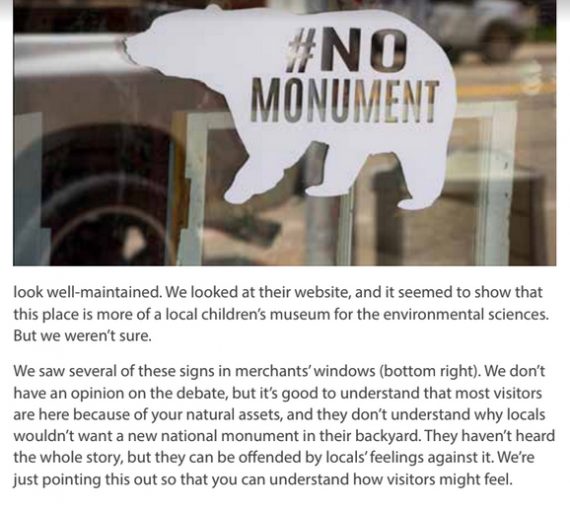 All these suggestions reportedly cost the county about $20,000 and though they are under no obligation to implement any of the firm’s recommendations, it does speak volumes to a very real concern. When a municipality or county seeks outside “expert advice,” what it often receives is a slick brochure compiled by faceless professionals who have no real understanding of the heart and soul of the community they are dissecting.
All these suggestions reportedly cost the county about $20,000 and though they are under no obligation to implement any of the firm’s recommendations, it does speak volumes to a very real concern. When a municipality or county seeks outside “expert advice,” what it often receives is a slick brochure compiled by faceless professionals who have no real understanding of the heart and soul of the community they are dissecting.
Following on the heels of the Opportunity Assessment by Roger Brooks, San Juan County engaged the services of an advertising company to make the “Monumental” campaign a reality. The RELIC Agency is based in Provo and according to its website:
“…we’re passionate about the tourism industry. The world has many incredible sights to see, be they famous attractions or hidden treasures, (emphasis added) and we want to showcase these places in a way that draws in new sightseers and keeps previous visitors coming back.“
IN SUPPORT OF THE CAMPAIGN…IF NOT THE NAME
The September 4, 2018 County Commission Meeting
New Westerners claim that the uncontrolled growth of the “amenities economy” is out of their hands, that market forces and the whims of American Culture are driving the New West, not them. As one Utah environmentalist said defensively, “It would have happened anyway.” In effect they now refuse to take ‘credit’ (or responsibility) for the extraordinary “success” of the very economy they claimed would save the West. They actually distance themselves from the “solution” they continue to promote.”
Old Westerners long for the “good old days” of ranching and mining, detest the tourists and the New West image of their towns, but never hesitate to make a buck from the “amenities economy” when the opportunity presents itself. Many Old Westerners are millionaires today because land they bought for next to nothing in the 60s or 70s is now worth a fortune.
While many San Juan residents have expressed opposition to the new campaign–the tagline and the amount of money being spent, the Monumental promotion has its enthusiastic supporters as well.
Bill Haven, the owner of a tourist business near Blanding is one of them. He’s the president of the Blanding Area Travel Council (BATC) and has long been an advocate for an expanded recreation industry in San Juan County.
On September 4, Haven appeared before the commissioners to express his support. (To read the verbatim public comment by Haven and the commissioners, click here)
Haven explained to the commission that, “we had put in for kind of the same marketing grant in 2016 and we did receive acceptance of that grant. But we never used that grant because of the situation at that time with the Bears Ears National Monument. We re-met as a group and said maybe it’s not appropriate right now (emphasis added), with what the county’s doing and the citizens of the county, with regards to the monument – no decision had been made on it.”So in 2016, with the county strongly opposed to the new monument, Haven acknowledged that it would be “inappropriate” to see the county pursue tourist promotion dollars as it simultaneously fought the massive marketing campaigns of the outdoor industry and mainstream environmentalists to promote it.
But now Haven believed it was time to move forward, especially since, as he noted, “this recent marketing grant is basically what we wanted to do but even more because the budget’s so much bigger on it.” (emphasis added)
Commissioner Lyman wrestled with the question, wondering if “there’s a way locally, maybe we need more local PR as to what it is that we’re promoting.” He noted that, “the BATC does a great job, and Natalie’s fantastic. Maybe we need to get more of an open house on some of these marketing campaigns, get these comments out in advance and sell people on the idea so we don’t get an emotional reaction to it.”
Arguably, of course, nobody in Moab, twenty years ago, thought the town would become the nightmare that it is today.
And Haven made an observation about tourist-related jobs. He told the commissioners that, “there’s a lot of people that work in the tourism business and cleaning rooms was never meant to be a career… it’s a way to make some extra money, and most people that do it say ‘great! I made some extra money!'”
But the fact is, very few Moabites who are employed in marginal , tourist-related jobs (sometimes they work three jobs just to get by), think of it simply as a quick way to earn some extra fun money.
People in Moab are working minimum wage jobs and trying to survive in a community where housing prices have spiraled out of sight. They may not have “meant” for it to become a career, but hard economic realities have often made it so. It’s what happens in a tourist economy.
Returning to the meeting, Lyman considered the possibility of postponing the promotion, suggesting, “could we delay that, at least until some of the wounds have healed and some of the lawsuits are done because it’s still such a symbolic point of division?”
Haven, who proposed an alternative, “Well could you rename it?” he asked. “It’s the marketing plan itself is what we don’t want to lose… I think with this marketing plan we can change the name, which isn’t that big an issue actually.” Later, he repeated the idea, saying, “If we need to change the name, or we need to change the semantics of it, or whatever we need to do, let’s do it! I just don’t want to see the marketing plan thrown out and not done for another couple of years.“
Eventually, it was clear that the debate isn’t about a tagline; it’s about the size of the promotion. Lyman agreed, saying, “That grant application was a huge win for Natalie’s office and we’re proud of her for what she did on it. We want to see our tourism businesses thriving and flourishing.” The question is, who will benefit the most?
MAKING PLANS FOR THE FUTURE…More Promotions? “CRA’s?”
If the Monumental campaign catches fire and brings more tourists to the county, what happens next? Economic development director Randall told the commission in June, that the next campaign in 2020 will seek to refine its message. And she noted that “international” promotions are possible.
If the Monumental campaign increases tourist spending, or as the Roger Brooks firm put it, if San Juan County gets better at “monetizing its tourism,” TRT revenues will increase as well.
Increased TRT revenues mean even more promotion. Though modifications to the law may allow communities to use more of their TRT funds to address impacts, few ever do. It’s why in 2018, Moab is spending TWO MILLION DOLLARS on its promotions, despite the fact that its streets are lined with new hotels and eateries and recreation-based shops, and with no end in sight. A recent article in the Moab Sun News reported even more to come. ” Two hotels are being constructed, six more are planned, condos are being developed, and a downtown lot will soon be home to 14 food trucks as construction continues around the city and county.”
Moab’s toothpaste is forever out of the tube. They’ll never get it back in. It’s over.
How long did it take for Moab to go from there to here? Life can change rapidly. Moab felt the first pangs of transmogrification in the winter of 1992-1993 when the little “funky, desert town,” then thought to be economically depressed saw the construction of seven motels, an Arbys, a Wendy’s, a Taco Bell, an Italian restaurant, new bike shops and an assortment of other tourist -related businesses. It took almost all its citizens by surprise, but of course its elected leaders, its “planners,” and administrators, not to mention a bevy of eager developers had known about the imminent explosion of growth all along. It was the first time I felt like a stranger in my own community.
In San Juan County, in 2018, if you pay attention, things are moving in a similar manner. In addition to its tourist promotion efforts, last year the San Juan County Commission created a Community Reinvestment Agency, an autonomous legal entity administered by a board composed of the county commissioners. It has the authority to create Community Reinvestment Areas (CRAs) throughout the county, in order to stimulate economic growth.
“Community Reinvestment Areas are areas of land in which property owners can receive tax incentives for investing in real property improvements…The CRA is a direct incentive tax exemption program benefiting property owners who renovate existing or construct new buildings. This program permits municipalities or counties to designate areas where investment has been discouraged as a CRA to encourage revitalization of the existing housing stock and the development of new structures.”
The first CRA is predictably a tourist project in Bluff, a parcel of land in Cow Canyon owned by Bluff Dwellings, LLC. The company’s operator, Jared Berrett. Berrett, also manages and owns two other tourist facilities— Four Corners Adventures in Blanding and Wild Rivers Expeditions in Bluff.
Berrett’s $6,000,000 “Bluff Dwellings Resort” is being called “an upscale 54-unit lodging facility” and is under construction just north of Bluff… If the CRA is finalized, Berrett will receive $458,000 in “tax relief.” The San Juan Record story quotes Natalie Randall who said, “We view it as an economic development tool, with the primary purpose to provide tax increment finance investment in future projects.”
The SJ Record story continued:
“If approved, 75 percent of new property taxes that are assessed for the development after it is complete will then be reimbursed to Bluff Dwellings through the CRA until the $458,000 is paid back. The other 25 percent will go to taxing entities.”
Though “Bluff Dwellings” is being called one of the biggest private investments in the county in recent years, more than anything else, it’s a bellwether. Other investors will watch its success and make decisions. Similar CRAs sweeten the deal.
In fact, a CRA is being considered by the City of Blanding for a “Marriott Fairfield Inn and Suites” on the city’s north side. In a San Juan Record article this week (9.26.18), the project seeks up to $1.25 million in assistance, via the application of a CRA. One of the developers is Commissioner Phil Lyman and he told the SJR that the CRA “changes our ability to get financing for a project like this.”
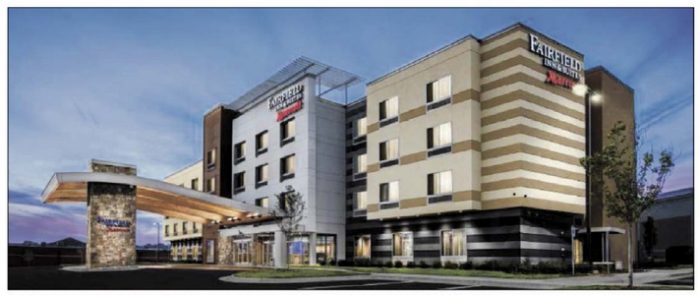 The $1.25 million would be utilized for what Natalie Randall calls “horizontal infrastructure” improvements, including the construction of curbs and gutters, storm drains, road improvements and landscaping. Otherwise the developer would be required to cover these costs.
The $1.25 million would be utilized for what Natalie Randall calls “horizontal infrastructure” improvements, including the construction of curbs and gutters, storm drains, road improvements and landscaping. Otherwise the developer would be required to cover these costs.
Phil Lyman took issue with parts of the San Juan Record article (which was updated later that day). On the SJR’s facebook page, he wrote:
“(The SJR writer Bill Boyle) has it completely backwards. The CRA is not loaning any money to the project, rather the project is essentially loaning money to the CRA to pay for major infrastructure improvements. These improvements do not belong to the project, but to the city. They should add value to the property, and with the increase in value, the project will see an increase in property taxes, which they will pay. The proposal is to have 75% of that tax increment paid back to the banks until the public infrastructure cost is covered.
Lyman added, “A flag hotel should not take business away from anyone but bring business to the country that is just not possible without it…My only reason for being involved is to grow my home town in a direction that is compatible with who we are instead of sitting on the sideline and watching it become exactly the opposite.”
But other motel owners objected. Candace Davis wrote, “Seems unfair to be supportive of a large name coming in when you haven’t even offered the same type of help to the already existing businesses in Blanding and Monticello. I thought you represented all of us.”
And her co-owner and husband, Jason Davis added, “I wonder if a ‘flag hotel’ operator would have protested the monument? I wonder if a ‘flag hotel’ would have put up ‘No Monument’ signs on their property and suffered from the ridicule of having people say that they will no longer stay or spend money at your place of business? I removed all of the signs when the county came out with the, slap in the face ‘Make IT Monumental’ decision. I think you are wrong. Blanding can’t even support the sale of alcohol, they want to keep their “hometown values”, having a ‘flag hotel’ is not going to doing that. It will have a significant impact on all the current mom and pop ran motels in the area.”
Another reader, Jake Brown, commented, “So basically the Blanding project is asking for a government subsidy for their hotel. A 75% property tax discount for however long it takes for the discount to reach 1.25 million dollars. As a manager of a local motel, I have to say that I am not in favor of local government (and ultimately, other hospitality businesses) helping to fund a competitors business, especially when the competitor is a local government official. This seems fishy and sounds an awful lot like a good ol boys club.”
(To read the SJR article and to all the comments in their entirety, go to the San Juan Record facebook page: https://www.facebook.com/
The references to loans, and who’s loaning what to who, obscure the issue more than they clarify. The mechanics of the CRA are this— the developer fronts the cost of the infrastructure and then receives a 75% reimbursement over time. The reimbursement revenue stream is generated by the property itself, but is returned to the owner at the expense of taxing entities. The bottom line is that the effective property tax bill for the owners of the proposed new Fairfield would be $1.25MM lower over the property’s first 20 years than it would in the absence of the CRA. The return for the hotel investors obviously goes up, not down, with the use of tax increment financing.
Or consider this generic example. Imagine a piece of land on the edge of any small rural community. The property is not being used and its taxes are low—let’s say $1000 a year. A developer comes along and wants to build a big box store, or a hotel, or a restaurant. When the project is completed, the taxes to jump dramatically, to as much as $75,000.
The developer would continue to pay taxes at the much higher rate, but for as long as 20 years, the additional taxes would not go to the usual recipients, like the schools and hospitals. Instead, 75% of the increased taxes would go to make improvements specifically within the identified “Community Reinvestment Area.” Those improvements are the costs that would never have fallen upon the city, had the project never been proposed and constructed. The developer argues that the project benefits the community in the long term, by creating jobs and eventually contributing more taxes to the city coffers.
For the most part, CRAs aren’t applicable to the construction of private homes, but to make it as simple as possible to understand the process…imagine someone building a new home and finding a similar way to reimburse his own property taxes for a couple decades. 75% of his property taxes would go to improvements adjacent to his own property like curbs and gutters, to financing his hookups to City Water and Sewer, to planting new trees and installing street lights to oversee his driveway. Eventually, when the tax relief period ended, all of his yearly taxes would be applied to the usual taxing entities. But for the specified period, his contributions to the local school district, the maintenance of local roads and government functions, would be a fraction of what they would be without the reimbursement–and would be less than the contributions of any of his existing neighbors, none of whom are able to tap into any tax benefits from the program he’s participating in. But the recipient of the tax relief could argue that at least some of the improvements enhance the entire neighborhood and, thus, increase the value of their properties as well.
Randall believes CRAs will be especially effective in Spanish Valley, at the northern end of the county, where plans to create a new city of several thousand are already underway.
Granted, and almost always, governments big or small, conservative or liberal, will insist that economic growth is inextricably linked to that community’s well-being. And they will seek “free funding” wherever they think they can find it to push that growth. I don’t doubt the intentions of most government leaders who seek government assistance, but there’s a more practical point to be considered…does ‘growth’ always benefit the community? Over a decade ago, in ‘Brave New West,’ I wrote:
Among the promoters of economic development are no doubt some earnest citizens who feel a robust expanding economy is always a benefit to the community and that it offers the promise of a stable future by providing an ever-expanding tax base. To think otherwise is blasphemy to most capitalists.
But in reality, an increased tax base in small rural communities rarely reduces individual tax burdens. The exact opposite is more likely to occur. Small towns across America have often come too late to the same conclusion. According to the American Farmland Trust, for every dollar paid in property taxes, the average U.S. urban resident uses $1.36 in public services, while the average farm uses only $.21 in similar services. That’s a remarkable gap.
Moab is now realistically, if not technically, an “urban area.” It has a much bigger tax base than it did two decades ago, investors are flocking to build more…some estimate that as much as $100 million in new projects are earmarked for Moab. Does that make Moab a more successful community than Blanding?
Have you been to Moab lately? It didn’t happen overnight. It took 25 years. Is that a date too distant to be concerned?
ASKING ‘INDUSTRIAL TOURISM’ QUESTIONS & A REPLY FROM SAN JUAN COUNTY COMMISSIONER PHIL LYMAN…
In the wake of the September 4 commission meeting, going straight to the economic development director seemed like the most prudent option, if Zephyr readers wanted to understand all the issues and concerns–and the necessary pursuit of solutions–that this matter has raised.
(To read my email to Randall, her reply and my follow up, click here)
I had previously been chastised by Mr. Haven for failing to do just that. At the September 4 meeting, Bill Haven told the commissioners, “…we’re all aware of the two articles that came out about Natalie that were totally unfounded, and didn’t even have the decency to go talk to her before they wrote the articles and said ‘how did this happen?'”
Even Randall’s husband Dustin commented, “…if you really want to know the truth/details call Natalie and her office up, they would love to talk details.” And Commissioner Lyman, in support of Randall, had written, “Natalie runs a department that is completely open with their information.”
And so, on September 18, with those admonitions in mind, I sent Natalie Randall a long list of questions, albeit in writing, hoping she could shed more light on the issue. Some of the questions were tough. I wanted to know if the county was prepared to deal with the changes if their promotional campaigns were as responsive as they wanted them to be. No one wants to be a victim of their own success.
Hours later, Randall replied:
“I appreciate you reaching out with all the concerns and questions you have addressed. Due to the extensive nature of the request, the amount of requests being received by our office, and per procedure; I will need to request that you submit a GRAMA request.”
But GRAMA, the Government Records Access and Management Act provides every person the right to request records from any governmental entity in Utah. GRAMA gives citizens the right to access government records, documents and correspondence related to a specific topic.
I wrote, “While I did request some hard facts, like the cost of tourism ad campaigns, I was mostly asking you, as the economic development director of San Juan County, for your opinion and perspective on the impacts of a significant planned expansion of the county’s tourist economy.”Randall never replied, but a few days later, Commissioner Phil Lyman sent a long “on the record” response to the questions.
(To read all the questions and Lyman’s reply in its entirety, click here).
Lyman talked about the economic state of San Juan County and makes the fair point that, “that the county’s property taxes are dropping, and our TRT is increasing...the infusion of $200k of state money for promotion, frees up $200k that the county has been spending on promotion that can now be used for mitigating costs. That is a big deal, and indirectly puts $200k right back into our general fund. So yes, the commissioners were please with Natalie’s efforts to tap those state resources rather than only using local general funds to run her department.”
The commissioner notes that while the tourist industry is booming in Moab and elsewhere, “it is not booming in San Juan County, and the environmentalists, using the BLM as their weapon of choice, continue to destroy our lives and businesses. The county’s lost revenue is one thing, but the drop in taxes is due to a drop in value of mineral producing property.”
In part, Lyman is right. Though declines in commodity market prices, from oil and gas to copper, have also caused significant tax revenue losses, increases in regulations have also played a role. This publication for years has reported efforts by mainstream environmentalists to eliminate the extractive industries across the West and replace them with a “tourism/amenities” economy. This transformation is changing the entire region’s demographics.
Like I noted in a recent article called ‘The New West’s Big Lie:’
“…these recently urbanized rural economies were rarely intended to benefit the citizens whose families founded small Western towns more than a century ago. Generations gave their sweat and blood to make a life in these last remote corners of the West and now, in the eyes of many, they serve no further useful purpose. For the New West, it’s not a matter of helping these rural communities. It’s about replacing them.”
Among my other questions to the economic development director, I wondered if most of the county’s residents knew about the Monumental campaign and asked, “how many of the county’s citizens were aware enough to object or offer criticisms before it was too late to bother?“
Lyman replied in part, “The tag line has never been the focus of the effort except by those who are hostile toward San Juan County. The Trib and the San Juan Record saw an opportunity to disparage Natalie and the County by making their own narrative about this campaign. It pains me to see you and Jami* jump on board with them. This is another gaslighting accusation put in the form of a question.”
(* Jami Bayles provided The Zephyr with verbatim transcriptions of the meetings quoted in the article and forwarded other related publicly available material sent to her by Natalie Randall).
Lyman agreed that, “(the tagline) did not resonate with me, and I have gently encouraged the use of a different tag line.” But in the transcription of the June 19 ‘working meeting,’ Randall references the “Monumental” tagline even noting its “play on words,” none of the commissioners objected at the time.
I had asked the economic development director what specific steps the county could initiate to assure the goal of not becoming another Moab. I asked, “Does the county have a plan? How does it assure that the jobs created are living wage jobs? (And also, what kind of efforts is your office making to bring non-tourism jobs to the county?)”
Lyman answered, “It is each persons responsibility to support themselves and not the counties job to assure anyone a ‘living wage job.’ If someone wants to build a resort style hotel, sell alcohol, rent jeeps, and give river tours, God bless ‘em. If someone else wants to try to create an outdoor school to promote appreciation for Gaia and her many gifts, God bless them too as long as they do it with their own money and not with government subsidies.”
And yet, the “Community Reinvestment Agency,” discussed earlier in this article, overseen by the commissioners themselves, are by definition “government subsidies.” Bluff Dwellings, the first CRA recipient stands to see tax relief in the amount of $458,000. The hotel proposed for Blanding, a $9 million Marriott Fairfield project is being developed in part by Phil Lyman who, as we’ve noted, seeks $1.25 million in CRA tax relief. (NOTE: The Blanding CRA is overseen by Blanding officials, NOT San Juan County’s commissioners)
Randall also stated that plans to initiate more CRAs, stretching all the way from Gouldings on the Utah/Arizona border, and north to Spanish Valley on the Grand County line, suggest an intent to use government subsidies on a very large scale.
Whether all these CRAs come to fruition, time will tell.
Unfortunately, the harder I pressed for answers, especially as they apply to plans and ideas the county has to resist runaway future “Industrial Strength Recreation,” and how it will deal with tourism impacts, the warier Commissioner Lyman regarded my questions. Ultimately he wrote, “your line of questioning is so accusatory…You really should seek to understand before casting aspersions. You have missed the mark and led a bunch of people down a really unfortunate path on this issue. You have given ammunition to our enemies, and distracted people from their lives and responsibilities.” And he asked, “Do you think that having lived in Moab first as a radical Ed Abbey environmentalist and then as the pariah of the environmentalists, gives you a moral high ground that warrants this sort of gotcha questioning?”
He concluded, in part, “Natalie’s office is completely transparent. What you call providing an opportunity for greater transparency is nothing but an assault… I am glad that this correspondence is ‘on the record’ because I think a lot of those who see you as a voice of reason, myself included, may start to recognize a less friendly motive than the one you portray. Scott Groene would be pleased.”
* * *
I can only reply by saying that for almost 30 years, I have consistently expressed the belief that an “Industrial Tourism” economy can have a devastating effect on rural communities and on the very resource environmentalists claim they are trying to protect. I first expressed those concerns in 1991 in an essay called, “New West Blues.” When I wrote that article, Moab was still a quiet “economically depressed” town. It was the first of many “cautionary tales” that I have written since then. I am not driven to write these articles by partisanship or ideology– I can’t. Any journalist who abandons objectivity to please his friends abandons his integrity as well.
And so, this has never been about “switching sides;” I tried to follow the issues, the information, and the facts.
Consequently, the mainstream environmental community, especially in Utah, has indeed, as Lyman states, labeled me “a pariah,” or worse. My opposition to a runaway tourist economy led my old environmentalist friends to portray me in public as a mentally unstable man with mysterious, deeply rooted “anger” issues.
As recently as last Spring, when a Salt Lake City journalist mentioned The Zephyr to a SUWA staff attorney, I was dismissed out of hand as an irrelevant “crank.” (I object to ‘irrelevant!’)
And for trying to take what I regard as a principled stand on Industrial Tourism, I lost most of my advertising support in ‘New Moab.’ The print version of The Zephyr ended in 2009 mainly for that very reason.
My well-documented concerns about Industrial Tourism as they relate to the Bears Ears controversy resulted in allegations that I’ve become a shill for the oil industry, white supremacists, Governor Herbert, the “alt-right,” and yes, even Phil Lyman.
So when Commissioner Lyman writes that, “Scott Groene will be pleased,” he may be right, but for a very different reason.
My old friend “Groan,” and the Southern Utah Wilderness Alliance, the Grand Canyon Trust, the Friends of Cedar Mesa, Patagonia and North Face, and their associates in the outdoor industry, and the urban environmental community across the country— all of them believe that the best way to eliminate the rural extractive American West is to pursue the “Industrial Strength Recreation” economy that the Trust’s Bill Hedden once said could doom it.
Whether this consortium finds support for that idea in the Liberal preferences of Moab, or the Conservative pursuits of San Juan County, it doesn’t matter. To them, as long as the outcome is the same, it’s a victory.
So yes, “Scott Groene will be pleased.”
Ultimately it may well be that San Juan County embraces full-fledged Industrial Tourism as the solution to its economic woes…But the citizens must be the ones leading themselves to the future. The only way they can make those choices is to be privy to all the facts. They can’t make honest and intelligent decisions without them. That’s all this publication ever attempts to do. We ask questions and look for some answers.
(Again, note that all the questions I sent to Natalie Randall and Phil Lyman’s response, in their entirety, can be found here).
THE UNLIKELY ALTERNATIVE FUTURE
A few weeks ago, as San Juan residents speculated uncertainly about their county’s future, a couple business owners asked me how, in my opinion, could a tourist economy be embraced, but still keep it in the hands of the local population. In other words, how do we avoid losing control of our own communities?
I agreed it was a challenge and that, in fact, I’d never seen a small rural community embrace tourism on a large scale that did NOT lose control. Moab was just the most recent example.
But I offered some specific ideas that few if any tourist towns ever consider until it’s too late to bother. But for example they could require national chain restaurants (even franchised ones) to provide employee housing… Or the county could consider a significant discount/tax break that could be offered to new business owners who live full-time in San Juan County. They could charge businesses in the accommodations sector very high water use rates to ensure that motels pay their fair share.
But ideas like that are just window dressing.
What it really comes down to is this: What kind of community do you want to be? Do you want to hold true to your own values and standards, or do you want to satisfy the expectations of others? Are you trying to preserve your own community, or do you want to, in effect, build a new one?
For example, most businesses in San Juan County close on Sunday and many do not keep the doors open late at night. The county’s “Opportunity Assessment” took a dim view of that. No doubt, revenues are being lost. What’s more important?
I remember, almost two decades ago, discovering both Monticello and Blanding shut down on a Sunday morning, and for a moment I was annoyed by the inconvenience. But then it occurred to me that both communities, just 55 and 77 miles down the road from Moab, had not yet become a slave to Industrial Tourism, Greed, and the New American Way. In 2018, they still haven’t.
Blanding voted recently to continue its ban on the sale of alcohol within the city. Existing restaurants could benefit financially from a change in that law. And a change would surely bring more eateries, and bars and brew pubs to town. Is that what its citizens want?
I’m not a member of the LDS Church and I’m probably to the left of many San Juan County citizens. But a religion-based, conservative community, if that’s who you are, should not need to hide its beliefs or abandon its values, whether or not it’s out of the mainstream and “un-marketable” to an otherwise changing world. Either you remain the community that in your hearts you feel you are. Or you embrace the community that others insist you need to be.
I’m reminded of an observation by the late historian Steven Ambrose. He once offered a comparison of two 19th Century warriors–Crazy Horse and George Armstrong Custer. Ambrose noted the similarities. They were both military leaders, both were great horsemen, both loved the wide open prairies and the freedom that came with it. But, he said, there was a difference…
“Custer had that American quality of always being in a state of becoming. He was always reaching out for something in the future—bigger, better, more prestige, more power, more recognition.
“Crazy Horse didn’t want to be better. He just wanted to be.”
In San Juan County, Utah, its residents, Native American and Anglo alike, might want to ask themselves, and each other, which world they would prefer.

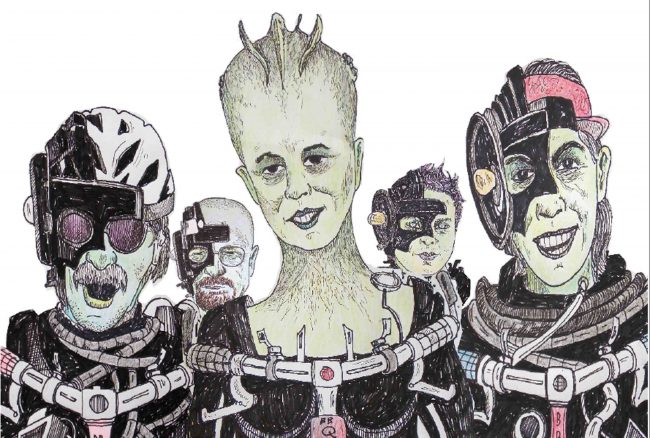
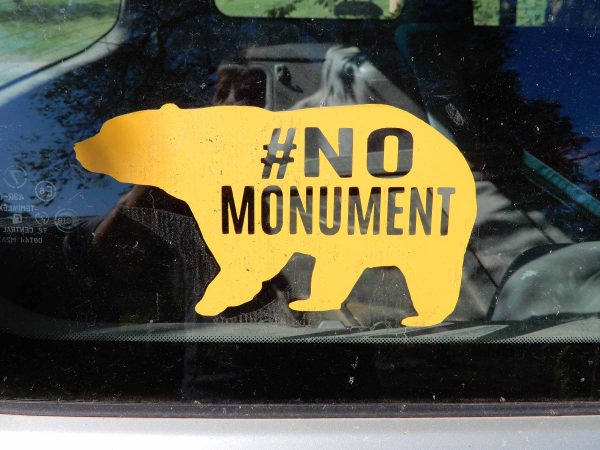
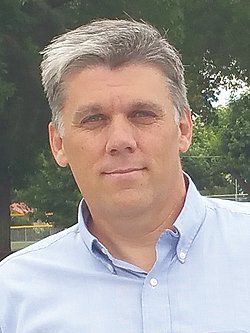
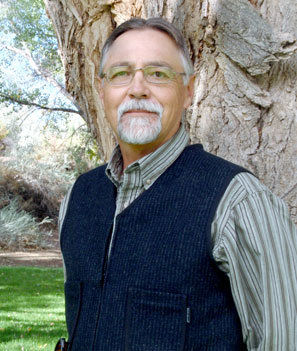
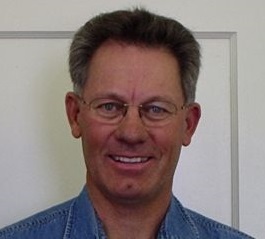

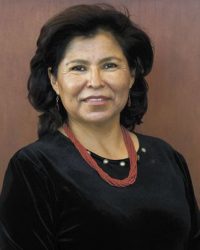
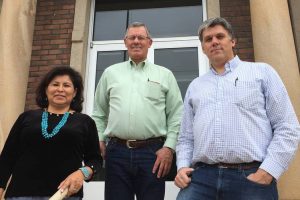
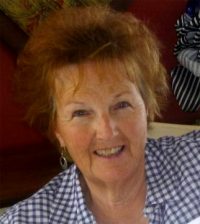





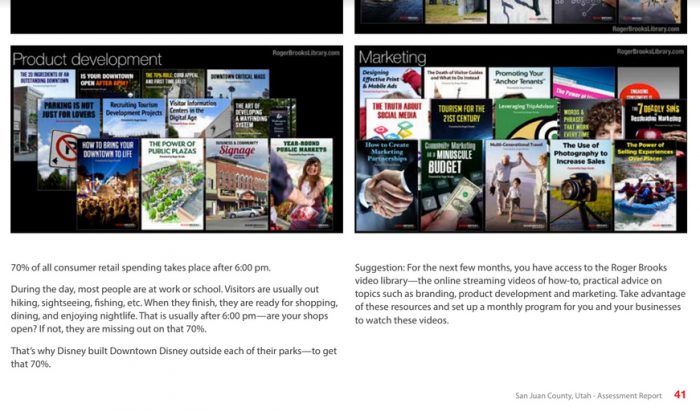
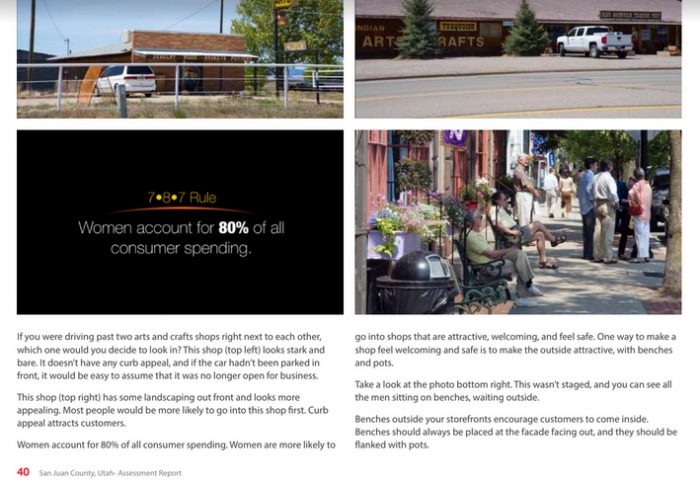
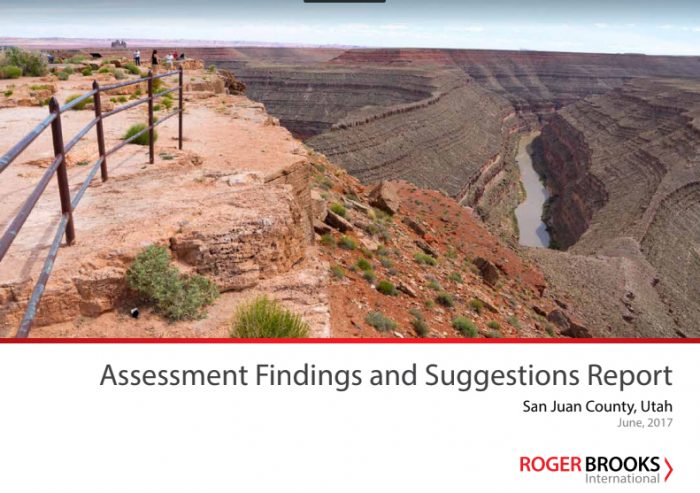
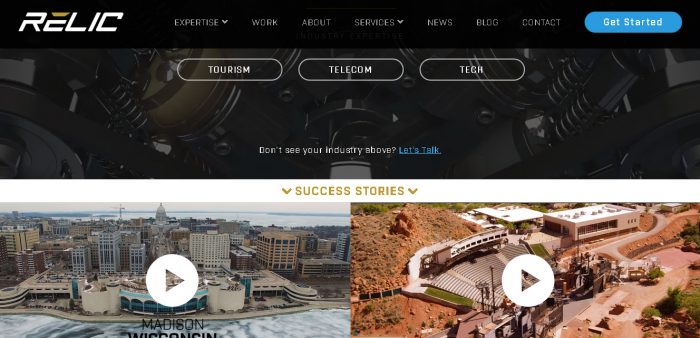

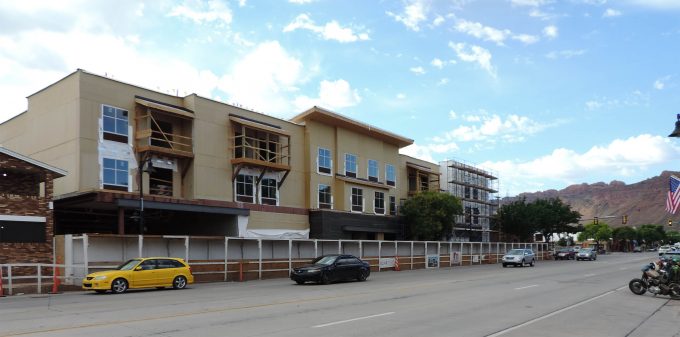
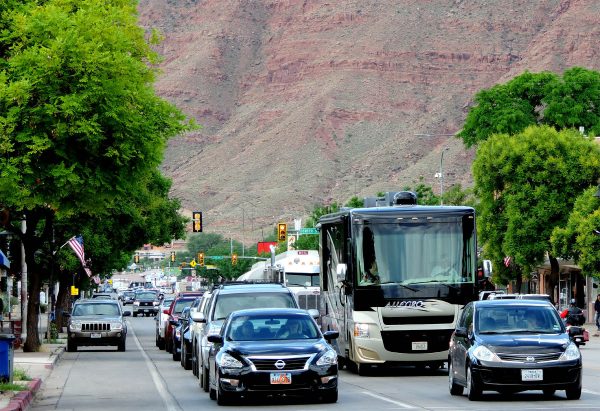
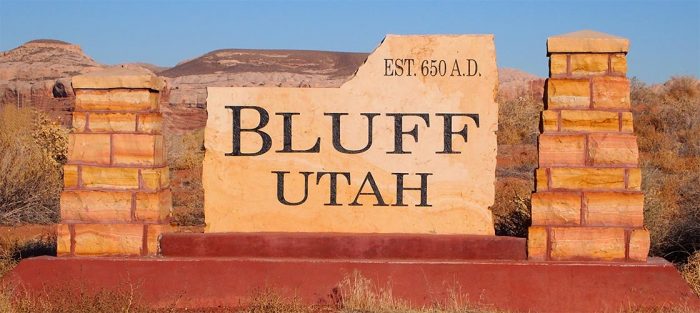
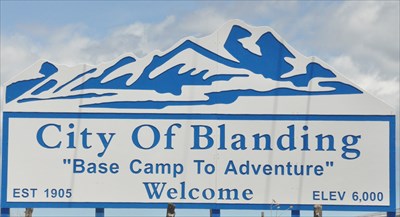
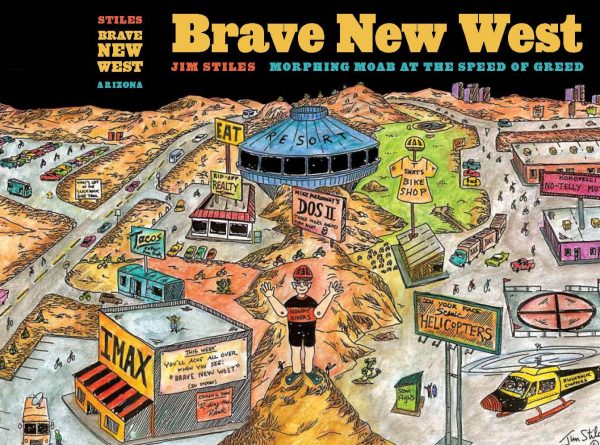
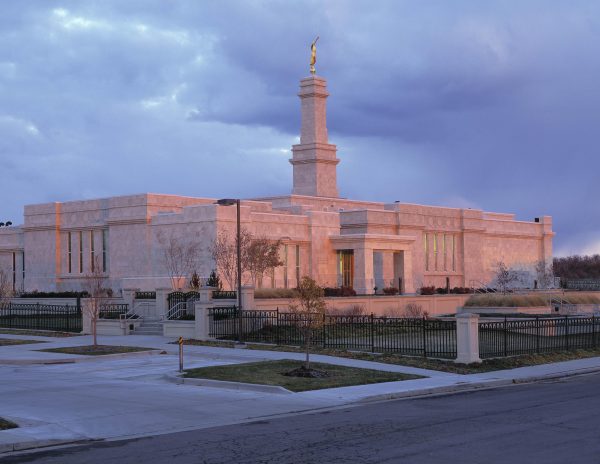
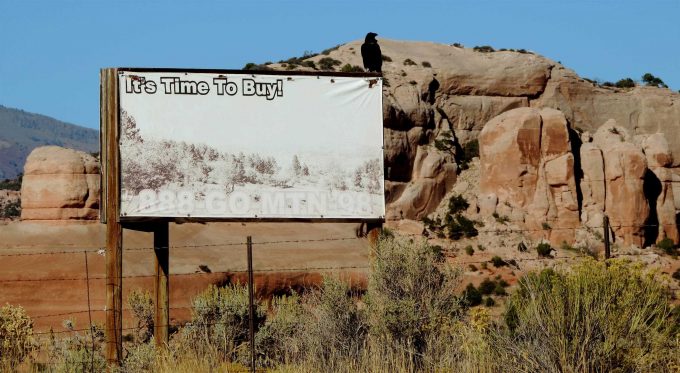


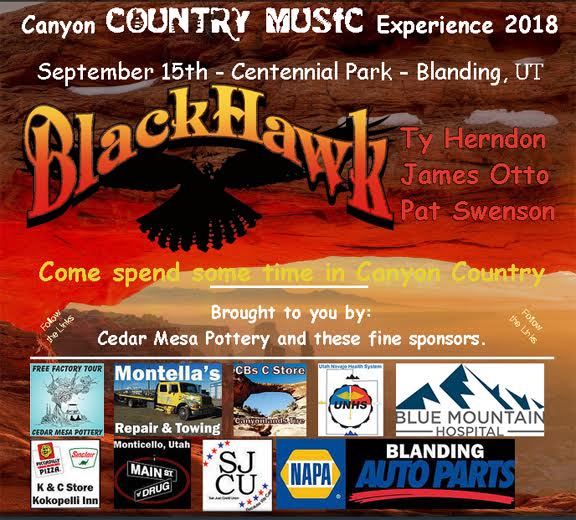

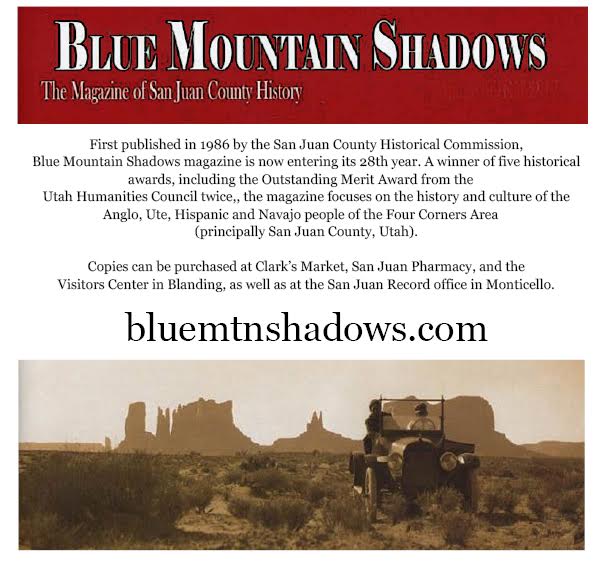


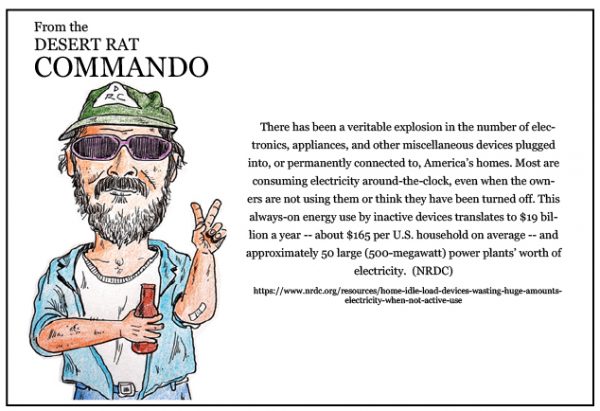
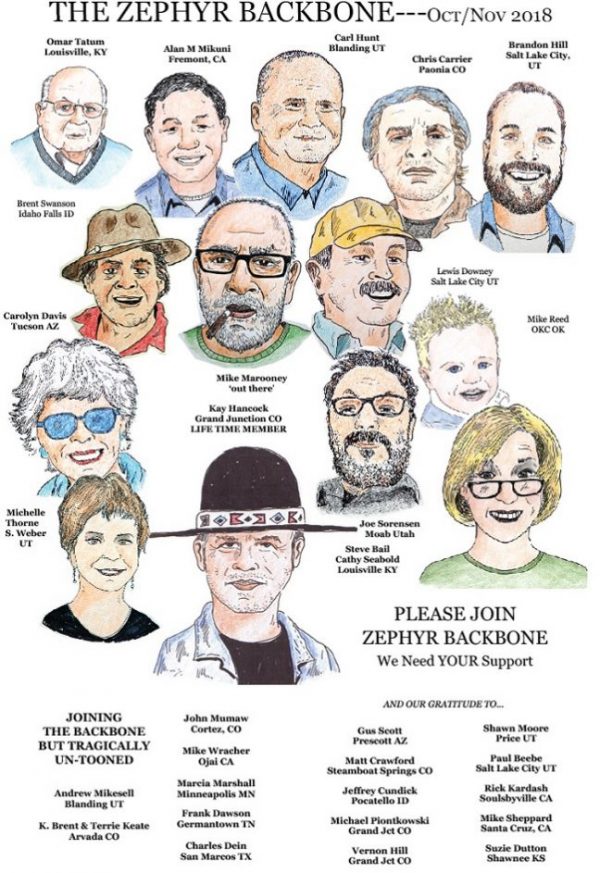
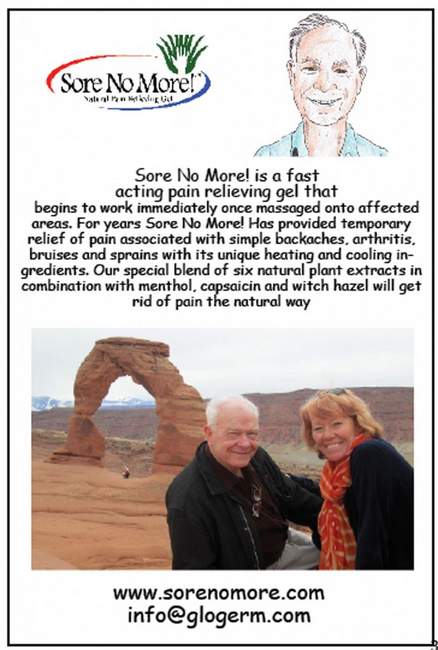
Sigh. I don’t live in Utah anymore, but this sort of stuff always makes me sad. I just came back from visiting the Czech Republic, and there, several small towns have become unlivable. The endless hordes of tourists is a burden on everybody who is not dashing in and out, and many long time residents have been chased out, renting their former apartments to tourists. Many people talk about it, but nothing is being done.
The small town that I was staying near, had not yet been hit big time. But like here, suddenly there is a “Club” whose members have, um, conflicts of interest, that’s been organized to promote the area. The article in the local magazine never addresses the issues the other over-promoted towns and areas are facing. They are perky and upbeat about promoting the area as though it was all about having a few more people come to “our lovely location.” Won’t be lovely for long. The traffic is already a big headache for long-term residents because the infrastructure was never designed for more and more cars every year. Areas once reserved for children playing are now paved over, and it’s never enough.
Really good stuff, Jim. Enjoyed reading it!
Really great article, Jim! I wish you had spent more time on the role of large projects in destroying the identity of a place. Anytime large projects (like the aforementioned flag hotel) are allowed/encouraged, you are allowing an aspect of your economy to be packaged up for sale to outside investors who have no motives regarding the community but profit. Small businesses are a bit less “efficient.” It’s much harder to package them for sale to outsiders, and they yield benefits that stay in the community.
excellent article, Jim–although I sure wish articles like this weren’t needed. Your cautionary tale will only prove you prophetic in years to come. The denial and obfuscations of all the promoters is the most bald-faced hypocrisy. And they have the nerve to tell you that you were out of line? Was Paria Canyon named after YOU? Why not be done with it and turn southern Utah into a Los Angeles theme park. How about re-branding the monument “Disney’s Mouse Ears”? It’s all going to happen and it’ll be ugly, it’ll look like anywhere America except for a red rock or two behind the endless strip of motels, chain restaurants and adventure outfitters. We still have “go-growthers” here in Boulder Colorado and as one of them myself… well… a lot of good it’s done. Can you hear the sarcasm? I often find myself quoting the Wicked Witch Of The West’s last words: “what a world, what a world…”
ha!! “Go-Growthers!”–that should read NO-GROWTHERS!
[…] Canyon Country Zephyr […]
Brave New West indeed…. and those of us who saw it coming probably knew it was inevitable.
[…] subsidy generically known as tax increment financing (TIF), which was briefly discussed as part of a longer article in the September/October Zephyr. This policy tool has become a source of considerable confusion and consternation among some […]